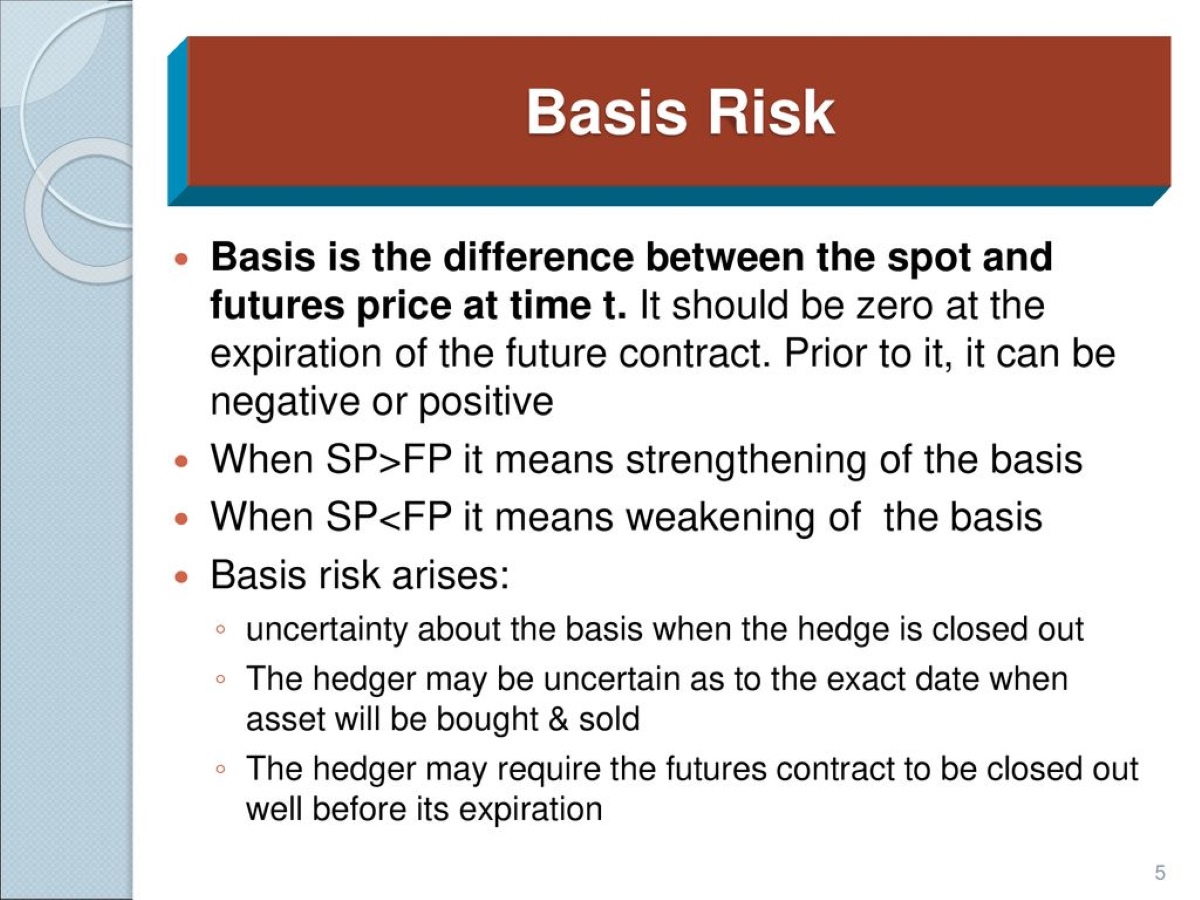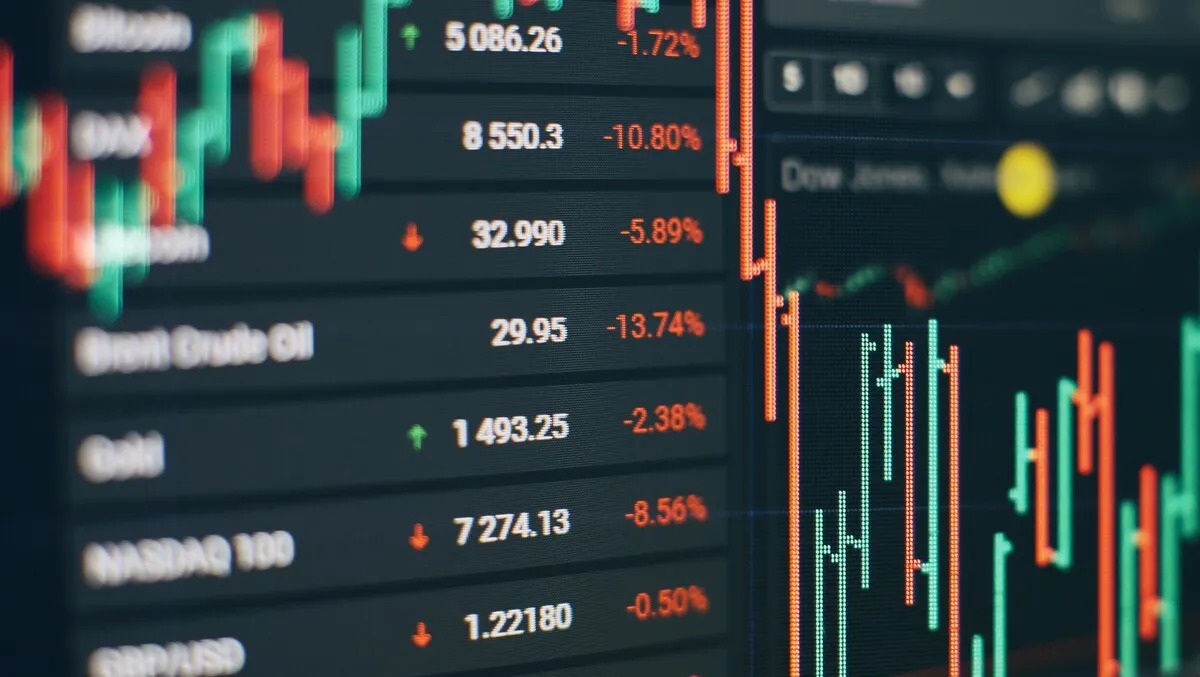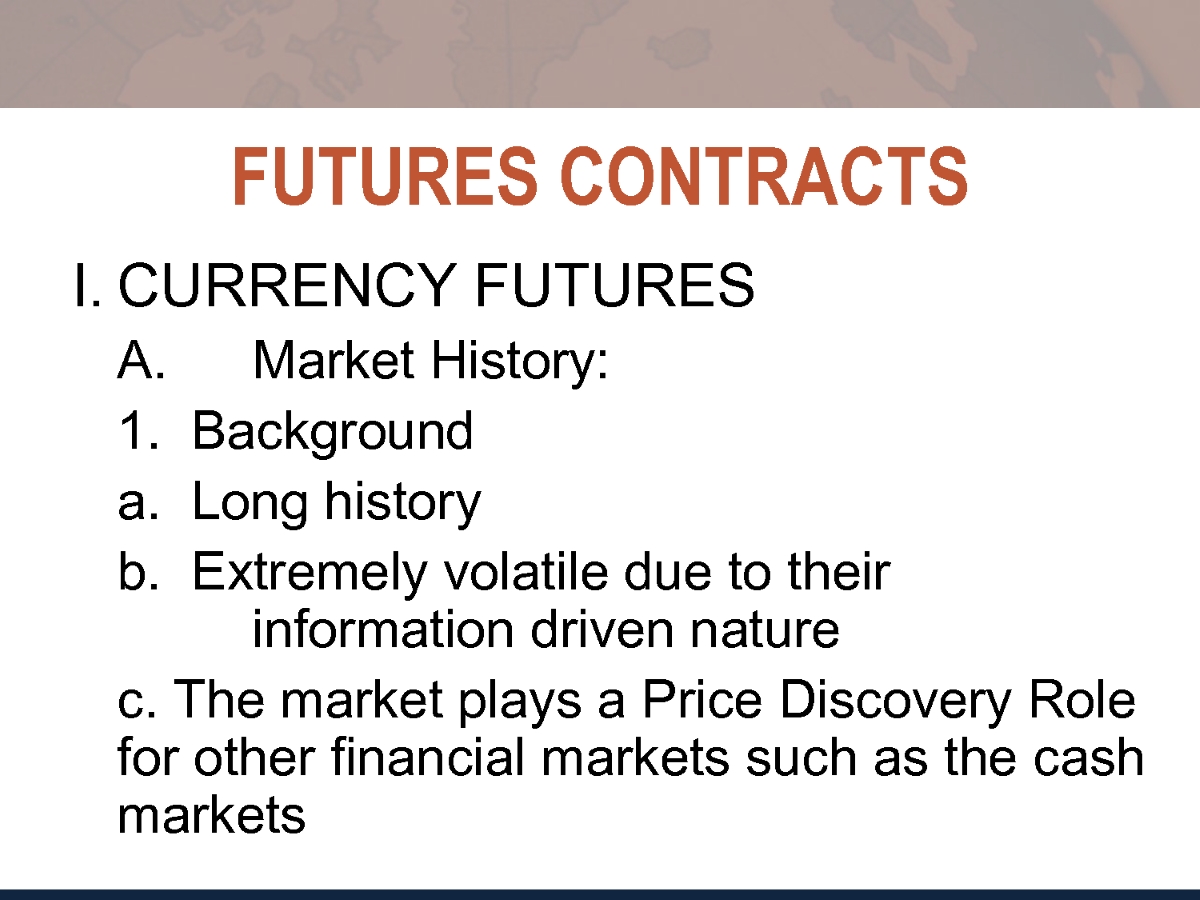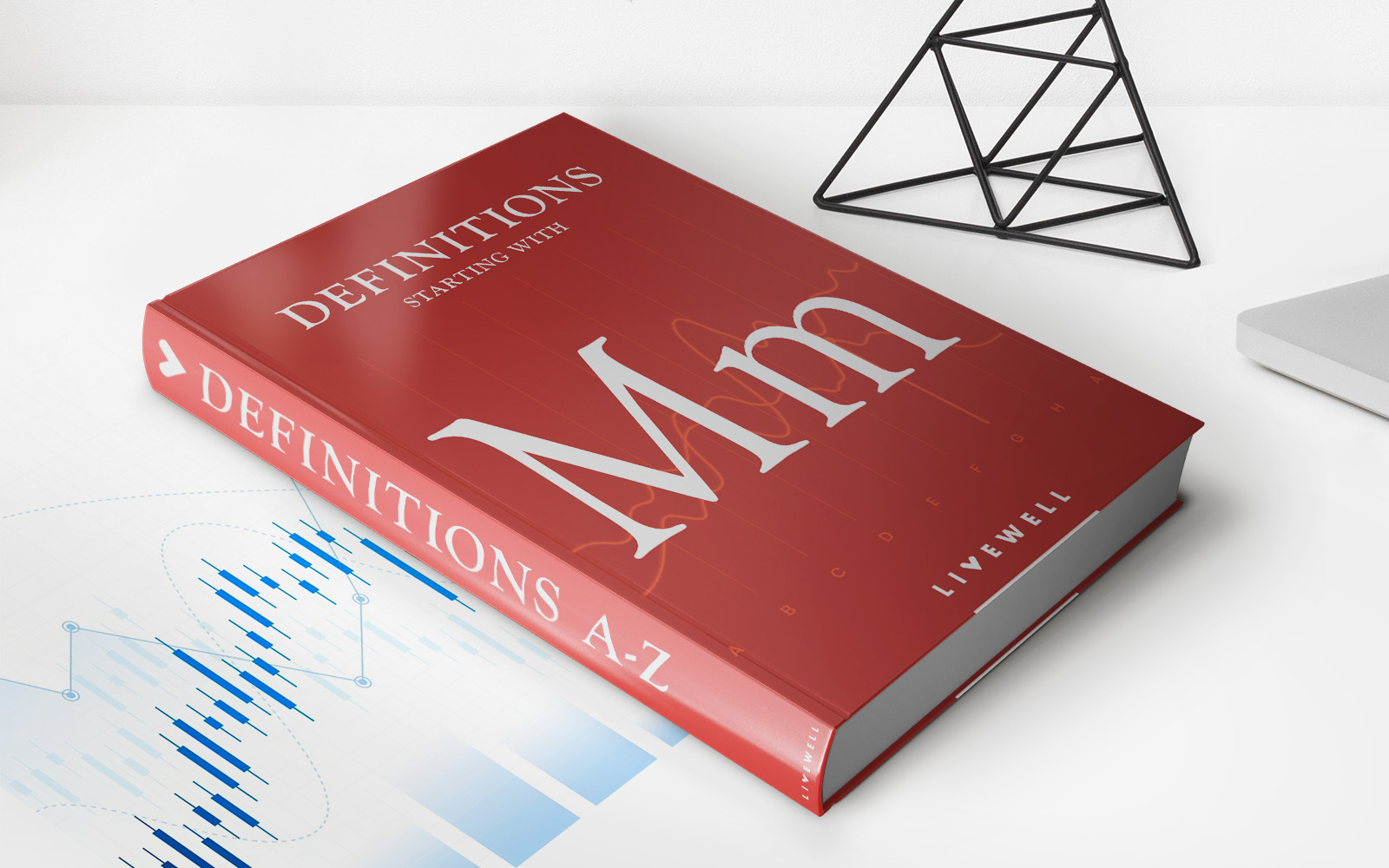Home>Finance>How Are Futures Contracts Used To Hedge Against Foreign Currency Flucuations?
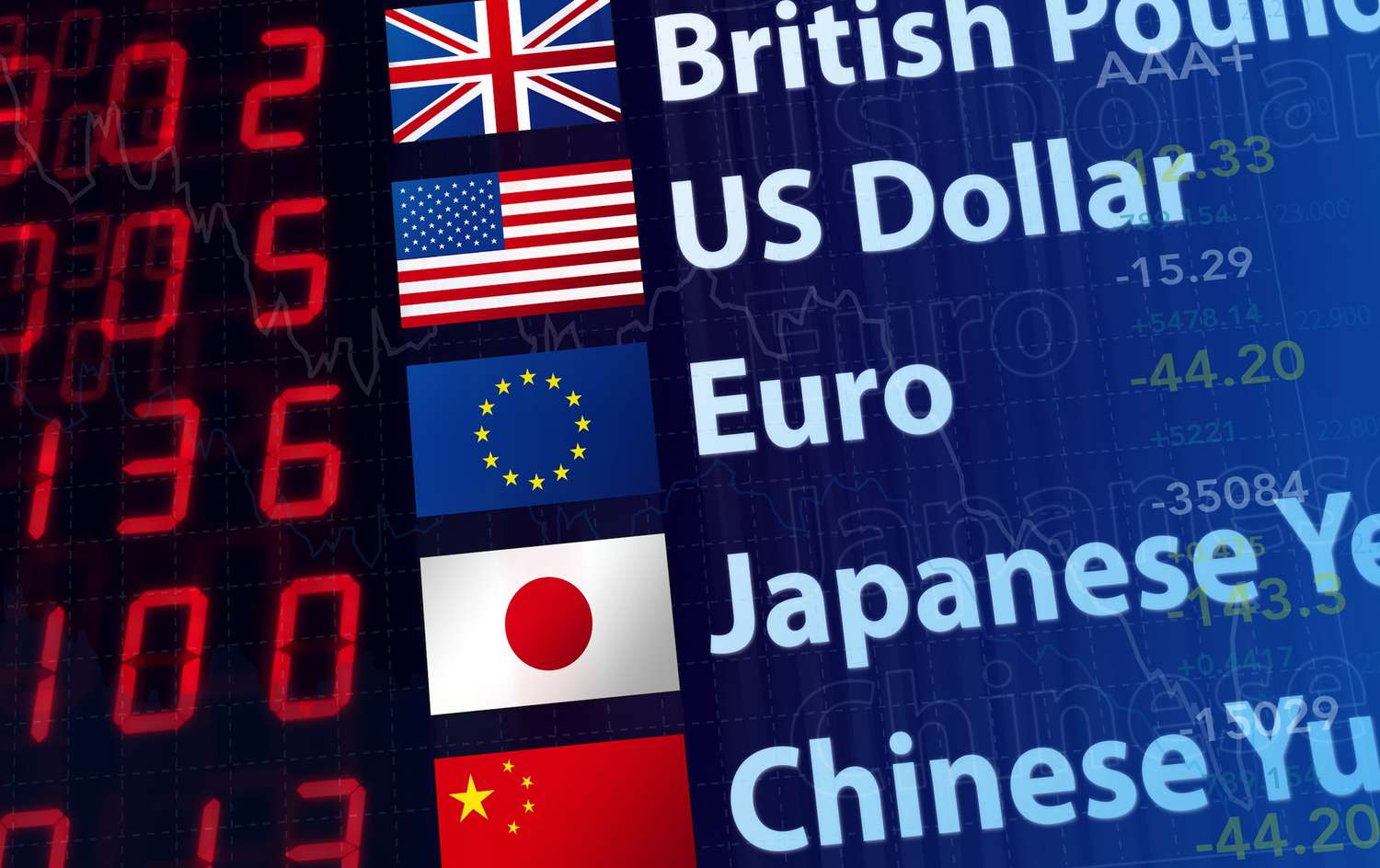

Finance
How Are Futures Contracts Used To Hedge Against Foreign Currency Flucuations?
Published: December 24, 2023
Discover how futures contracts can be used in finance to mitigate the risk of foreign currency fluctuations and protect investments against market volatility.
(Many of the links in this article redirect to a specific reviewed product. Your purchase of these products through affiliate links helps to generate commission for LiveWell, at no extra cost. Learn more)
Table of Contents
- Introduction
- Understanding Futures Contracts
- Foreign Currency Fluctuations and Their Impact
- Using Futures Contracts as a Hedging Tool
- Mechanics of Hedging with Futures Contracts
- Examples of Hedging Against Foreign Currency Fluctuations with Futures Contracts
- Benefits and Risks of Hedging with Futures Contracts
- Conclusion
Introduction
Welcome to the world of finance, where markets are constantly buzzing with activity and investors are always seeking ways to mitigate risk and maximize returns. One of the key challenges that investors face is the volatility of foreign exchange rates. Fluctuations in currency values can have a significant impact on businesses, especially those engaged in international trade. To mitigate this risk, investors turn to various strategies, one of which is using futures contracts to hedge against foreign currency fluctuations.
In this article, we will provide a comprehensive overview of futures contracts and their role in hedging against foreign currency fluctuations. We will discuss how futures contracts work, the impact of foreign currency fluctuations, and the mechanics of using futures contracts as a hedging tool. Additionally, we will provide examples of how investors can utilize futures contracts to protect against currency risk, and highlight the benefits and risks associated with this strategy.
Before we dive into the details, let’s start by understanding the basics of futures contracts.
Understanding Futures Contracts
Futures contracts are financial agreements between two parties, wherein they agree to buy or sell a specified asset at a predetermined price and date in the future. These contracts are standardized and traded on regulated exchanges, providing a transparent platform for buyers and sellers to enter into transactions.
The underlying asset in a futures contract can be anything from commodities like crude oil, gold, or agricultural products, to financial instruments like stock indices, interest rates, or currencies. In the context of hedging against foreign currency fluctuations, the underlying asset is a specific foreign currency pair (e.g., USD/EUR).
Unlike options contracts, futures contracts oblige both parties to fulfill their contractual obligations. This means that at the expiration of the contract, the buyer is obligated to purchase the underlying currency, and the seller is obligated to deliver it. The price at which the transaction takes place is known as the futures price.
One of the key features of futures contracts is leverage. By putting down a fraction of the contract’s value, known as the margin, traders can control a larger position in the market. This amplifies potential profits, but also increases potential losses.
The value of a futures contract fluctuates with changes in the underlying asset’s price. If the price of the foreign currency pair increases, the value of the futures contract increases, and vice versa. The trading of futures contracts occurs on a daily basis, with profits or losses settled daily through a process called marking-to-market.
It’s important to note that futures contracts are standardized both in terms of contract size and expiration date. This standardization allows for ease of trading and liquidity, as investors can easily enter and exit positions.
Foreign Currency Fluctuations and Their Impact
Foreign currency fluctuations refer to the changes in the value of one currency relative to another. These fluctuations are driven by a variety of factors, including economic indicators, geopolitical events, interest rate differentials, and market sentiment. For businesses engaged in international trade, these fluctuations can have a significant impact on their profitability.
When the value of a foreign currency appreciates relative to the domestic currency, it becomes more expensive for domestic businesses to import goods and services from that country. This can result in higher costs for raw materials, equipment, or finished products, squeezing profit margins. Conversely, when the domestic currency appreciates, it becomes cheaper for businesses to import goods and services, increasing their purchasing power.
Additionally, foreign currency fluctuations can impact the value of a company’s foreign assets and liabilities. If a company holds foreign assets denominated in a depreciating currency, the value of those assets decreases when converted back into the domestic currency. On the other hand, if a company has liabilities denominated in a depreciating currency, the value of those liabilities increases.
These fluctuations can also impact the competitiveness of domestic businesses in international markets. If the domestic currency appreciates, it can make goods and services produced in the domestic market more expensive for foreign buyers, leading to a decrease in exports. Conversely, a depreciating domestic currency can make exports more competitive, potentially boosting international sales.
Managing the impact of foreign currency fluctuations is crucial for businesses, as unmitigated risk can lead to financial instability and loss of competitiveness. This is where hedging with futures contracts comes into play.
Using Futures Contracts as a Hedging Tool
Futures contracts serve as a powerful tool for hedging against foreign currency fluctuations. By entering into a futures contract, investors can establish a predetermined exchange rate at which they will buy or sell the foreign currency in the future. This allows them to protect their positions and mitigate potential losses resulting from adverse currency movements.
When using futures contracts as a hedging tool, investors can take two positions: long or short. A long position involves buying futures contracts to hedge against potential currency appreciation, while a short position involves selling futures contracts to hedge against potential currency depreciation.
Let’s consider an example to better understand the mechanics of hedging with futures contracts:
Suppose a US-based importer expects to purchase 100,000 euros in three months to pay for goods from a European supplier. The current exchange rate is 1 euro = 1.10 US dollars. The importer is concerned that the euro may appreciate against the US dollar in the next three months, increasing their costs.
To hedge against this risk, the importer can enter into a futures contract to buy 100,000 euros at a predetermined exchange rate of 1.10 US dollars per euro, with a delivery date three months from now. If the euro appreciates by the delivery date, the increase in the value of the futures contract will offset the increased cost of purchasing euros in the spot market.
Conversely, if the importer expects the euro to depreciate, they can enter into a futures contract to sell euros at a predetermined exchange rate. If the euro depreciates as expected, the decrease in the value of the futures contract will offset the loss incurred from purchasing euros in the spot market.
By using futures contracts, investors can lock in exchange rates and protect themselves from potential currency fluctuations. This provides certainty in their budgeting and financial planning, reducing their exposure to currency risk.
Mechanics of Hedging with Futures Contracts
The process of hedging with futures contracts involves a few important mechanics that investors should understand. Here are the key steps:
- Identify the exposure: First, investors need to identify the specific foreign currency exposure they want to hedge. This could be anticipated future cash flows, payable amounts, or investments denominated in foreign currencies.
- Determine the hedge ratio: The hedge ratio represents the proportion of the exposure that will be hedged with futures contracts. It is calculated by dividing the value of the exposure by the value of the futures contract. The hedge ratio helps determine the number of futures contracts needed for effective hedging.
- Select a futures contract: Investors need to choose the appropriate futures contract that corresponds to the foreign currency they want to hedge. This includes selecting the expiration date and contract size that best align with their hedging needs.
- Execute the futures contract: Once the futures contract is selected, investors can enter into the contract by either buying or selling the appropriate number of contracts based on their desired hedge ratio. This can be done through a broker or an online trading platform.
- Monitor and manage the hedge: It is important to regularly monitor the futures contract and the underlying exposure. Changes in the value of the futures contract will reflect the impact of currency fluctuations. Investors can choose to adjust their hedge position by entering into additional contracts or closing out existing positions if market conditions change.
By effectively implementing these steps, investors can establish a systematic process for hedging against foreign currency fluctuations. This allows them to have more control over their exposure to currency risk and protect their financial interests.
Examples of Hedging Against Foreign Currency Fluctuations with Futures Contracts
Let’s explore a few examples that illustrate how investors can use futures contracts to hedge against foreign currency fluctuations:
Example 1: Exporter Hedging Currency Risk
Imagine a US-based exporter who expects to receive payment in euros for their goods in three months. They are concerned about potential depreciation of the euro against the US dollar, which would reduce their revenue. To hedge against this risk, the exporter can enter into a futures contract to sell euros at a predetermined exchange rate. If the euro depreciates, the loss incurred from the spot market transaction will be offset by the gain in the futures contract.
Example 2: Importer Hedging Currency Risk
Consider a UK-based importer who needs to pay for goods in US dollars in six months. To protect against potential appreciation of the US dollar, the importer can enter into a futures contract to buy US dollars at a fixed exchange rate. If the US dollar appreciates, the increased cost of purchasing dollars in the spot market will be offset by the gain from the futures contract.
Example 3: Financial Institution Managing Currency Risk
A global financial institution holds a portfolio of international investments denominated in various currencies. To manage currency risk, the institution can use futures contracts to hedge their exposure to foreign exchange rate fluctuations. By taking positions in futures contracts that align with their investment holdings, they can protect the value of their portfolio and mitigate potential losses resulting from adverse currency movements.
These examples highlight how futures contracts can be tailored to specific situations to mitigate currency risk for businesses and investors. By using futures contracts as a hedging tool, individuals and organizations can safeguard their financial interests and have more predictability in their international financial transactions.
Benefits and Risks of Hedging with Futures Contracts
Hedging with futures contracts offers several benefits to investors and businesses, but it is essential to consider the associated risks. Let’s explore both sides:
Benefits:
- Risk Mitigation: The primary benefit of hedging with futures contracts is the ability to mitigate the risk of adverse currency movements. By establishing predetermined exchange rates, investors can protect their positions and minimize potential losses resulting from currency fluctuations.
- Budgeting and Planning: Hedging with futures contracts provides a level of certainty in budgeting and financial planning. Businesses can forecast and manage their cash flows more accurately, knowing that they have locked in exchange rates for future transactions.
- Increased Confidence: Hedging allows businesses and investors to operate with increased confidence in the face of volatile currency markets. It removes the uncertainty associated with currency fluctuations and allows them to focus on their core operations.
- Flexibility: Futures contracts offer a high degree of flexibility in terms of contract size, expiration dates, and the ability to adjust positions as market conditions change. This allows investors to tailor their hedges to their specific needs and adapt to evolving market dynamics.
- Liquidity and Transparency: Futures contracts are traded on regulated exchanges, ensuring liquidity and transparency. Investors can enter and exit positions easily, with access to real-time pricing information and a well-functioning trading environment.
Risks:
- Price Volatility: Currency markets can be volatile, and futures contracts are not immune to price fluctuations. Changes in the value of futures contracts can result in gains or losses. It is crucial for investors to monitor market conditions and manage their positions accordingly.
- Counterparty Risk: Futures contracts are financial agreements between two parties, and there is a risk of default by the counterparty. However, this risk is mitigated by trading on regulated exchanges, where clearinghouses guarantee contract performance.
- Overhedging or Underhedging: Determining the appropriate hedge ratio and timing can be challenging. Overhedging may result in missed profit opportunities, while underhedging may leave investors exposed to excessive risk. Careful analysis and market research are necessary to make informed hedging decisions.
- Costs: Engaging in hedging strategies incurs costs, such as brokerage fees, margin requirements, and bid-ask spreads. These costs should be taken into consideration when evaluating the effectiveness of hedging with futures contracts.
- Opportunity Cost: By hedging, investors may potentially forgo gains if the market moves favorably in their direction. Hedging is a risk management strategy and should be weighed against the potential opportunity cost.
Understanding and managing these risks is crucial when utilizing futures contracts for currency hedging. Proper risk assessment and a well-thought-out strategy can help investors navigate currency markets and protect their financial positions effectively.
Conclusion
Hedging against foreign currency fluctuations is a critical priority for businesses and investors engaged in international transactions. The use of futures contracts as a hedging tool offers an effective means of managing currency risk and protecting financial positions.
By entering into futures contracts, investors can establish predetermined exchange rates, providing certainty in their budgeting and financial planning. The ability to lock in rates for future transactions helps mitigate potential losses resulting from adverse currency movements, allowing businesses to operate with increased confidence.
While hedging with futures contracts offers numerous benefits, it is essential to acknowledge and manage the associated risks. Price volatility, counterparty risk, and the potential for overhedging or underhedging require careful consideration. Additionally, there are costs and opportunity costs to be weighed against the benefits of hedging.
Nevertheless, futures contracts provide flexibility, liquidity, and transparency, making them a preferred choice for currency hedging. The standardized nature of these contracts ensures ease of trading and access to real-time pricing information. This, coupled with the ability to adjust positions as market conditions change, allows investors to tailor their hedging strategies to their specific needs.
In conclusion, futures contracts provide a robust mechanism for hedging against foreign currency fluctuations. Through careful analysis, risk assessment, and strategic decision-making, investors can effectively manage currency risk and protect their financial interests in a volatile and ever-changing global marketplace.

